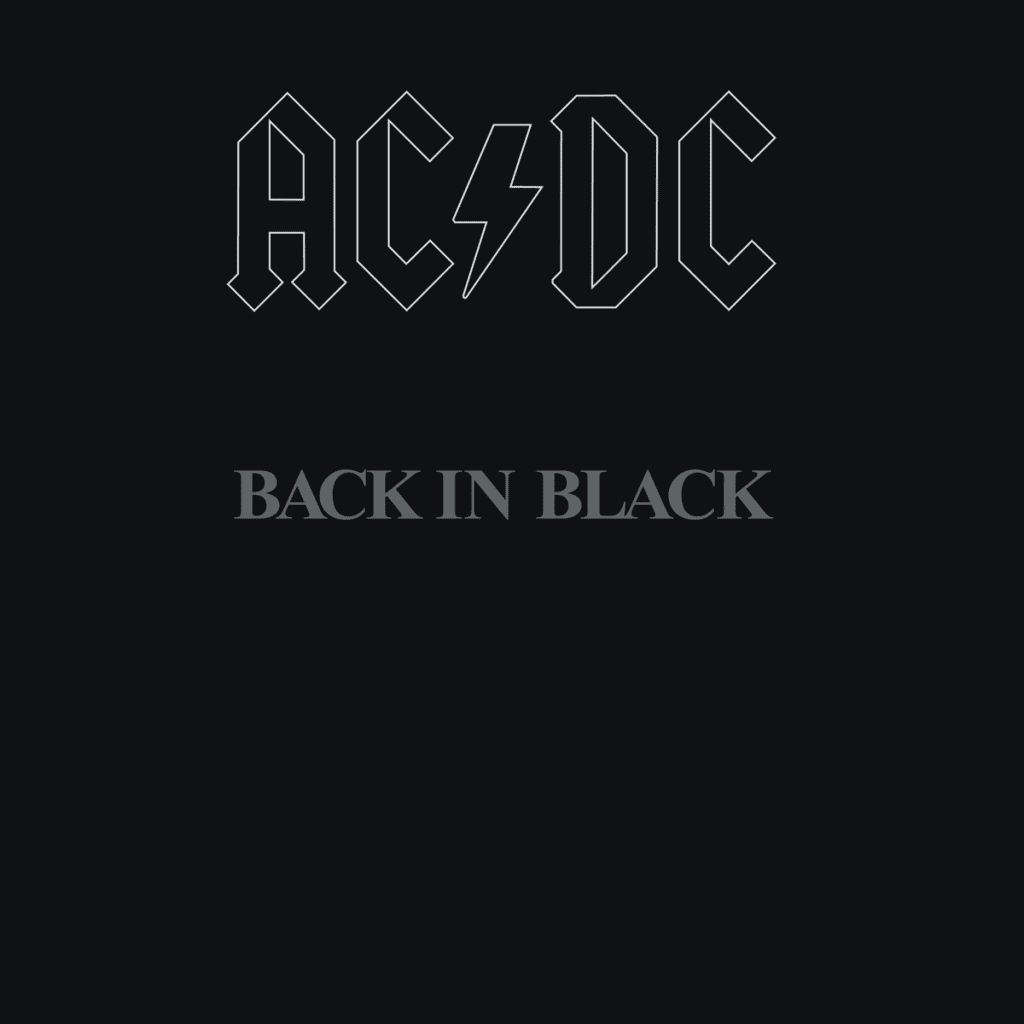The list of bestselling albums of all time is somewhat fluid depending on when, and how, the counting is done. But AC/DC’s Back in Black, released 40 years ago, is unquestionably one of them. Certified 25 times platinum by the Recording Industry Association of America and with, by some estimates, worldwide sales of around 50 million, it occupies a perennial slot in the Top 10.
For such a commercial behemoth and creative power, the circumstances leading up to the recording were not favorable. AC/DC had been steadily gaining ground over the 1970s, initially from their Australian base and then from London, finally breaking through internationally in 1979 with Highway to Hell, their first record to make it onto the US Billboard Top 100. In February 1980, however, they suffered the loss of their charismatic lead singer, Bon Scott, who died following a drinking binge.
Badly shaken, the band’s leaders – brothers Malcolm and Angus Young –- persevered and sought out a new singer. Scott was replaced with Newcastle-based Brian Johnson, who had enjoyed some success in the 1970s with the band Geordie. However, at the time, Johnason was mainly supporting himself fitting windshields and roofs to sports cars. He only made the journey to London for the audition because it coincided with a session singing on an advert for Hoovers.
Bands as brands
Back in Black, then, was a rebirth for the band. It also helped to definitively establish the power of rock bands as brands.
AC/DC’s brand was based on the foundation of the Young brothers on guitar. The unique interplay of Malcolm’s economic, monolithic rhythm playing and Angus’s trebly, staccato lead lines was a distinctive musical signature. This was reinforced by the visual iconography of the diminutive Angus wearing a school uniform on stage as well as the spiky font and lightning strike of their logo. Created by American typographer Gerard Huerta in 1977, the type font conveyed the sense of electricity implicit in their name.
As Ceros Originals described it decades later, “Huerta was just 22 when he started doing lettering at Columbia Records. But because it was the ’70s—when a hit rock album would sell millions—and he was designing album covers, Huerta’s work had a durability he never could have predicted … At the time, it was just another job: he drew it, his client signed off on the lettering, and it went into production. ‘No one would think that logo would still be around in 40 years,’ he says.”
Reflecting on the logo further, Huerta said, “It became the graphic image of the group. I would not have known that a piece of lettering I did for an album cover would still be around 41 years later. It’s a testament to their longevity as a group more than any contribution I made. I mean, I drew an album cover. I like to say that it’s the only lettering I’ve ever designed that is made up of all straight lines, which isn’t a mark of a good lettering designer.”
AC/DC wasn’t the first band to replace their lead singer or enjoy success after doing so. But in many previous cases, this had led to a change in direction or emphasis (as when Pink Floyd lost Syd Barrett, or Peter Gabriel stepped down from Genesis). There were, of course, important differences between Scott and Johnson as singers and as lyricists.
As Angus Young put it: “We weren’t looking for a clone or a copy. You’ve got to get someone that’s got their own character.”
Scott’s appeal derived from a seemingly effortless delivery that was of a piece with the sly witticisms in his lyrics. Johnson, by contrast, deployed a greater range and power. Lacking the hint of menace in Scott’s lyrics and vocals, his style was more exaggerated and worked with a broader brush. But the core musical template – minimal, riff-based and deceptively simple – remained in place.
Recorded in the Bahamas across April and May 1980, the album struck a fine balance between the triumphalism and machismo of the genre and a tribute to the late singer. But Johnson’s powerful, almost cartoonish performances –- offsetting the undeniable sexism of the lyrics –- and the taut riffs of the instrumentalists placed it dead center in a musical milieu of the burgeoning heavy metal scene, the established popularity of blues-rock, and the energy of punk.
Precision engineering
Crucially, Back in Black also set the standard for rock production. Producer Robert “Mutt” Lange had worked with the band on Highway to Hell and helmed the sessions for the follow-up. His achievement lay in the way he trod the line between recreating the dynamics of the band’s live sound and establishing a sonic space that allowed the songs to cut through on vinyl, and on the radio.
Lange’s approach was marked by an attention to detail and repeated takes that pushed the band – especially the nervous newcomer Johnson – to imbue the power of their performances with an unprecedented level of precision. The recording engineer on the sessions, Tony Platt, recalled the constant fine-tuning: “It was like organizing a photographic set, where the photographer keeps making small adjustments to the lighting and the way that the subject is posing until, at a certain point, he clicks the shutter and says, ‘That’s the photo I want.’”
Lange thus gave the raw music a commercial sheen that helped to mint an “arena rock” sound and has had a longstanding impact on commercial rock recording ever since. He would later oversee enormous hits for Def Leppard including Pyromania and Hysteria, and repeat the trick with country music on Shania Twain’s Come on Over, which is by a large margin the bestselling country album to date.
Back in Black’s enduring success, then, lies in the way it straddles rock mythology – pulling triumph from adversity – blunt energy and commercially oriented finesse. It catapulted the “hard rock” sound into the mainstream, establishing aesthetic norms for decades to follow and marking, in the process, the potential for a band’s sound to outlive and outstrip its origins.
Adam Behr is a Lecturer in Popular and Contemporary Music at Newcastle University. (Addition of Ceros Original excerpt courtesy of TFL).














